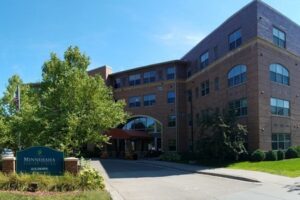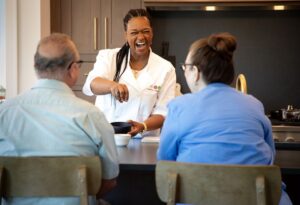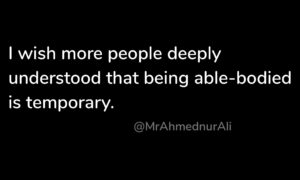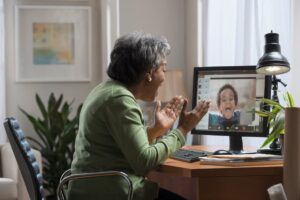
Minnehaha Senior Living
BY DEBRA KEEFER RAMAGE
Models of care – a constantly changing landscape.
The last few editions of Gracefully have focused on people who remain independent when past the age of 65 or beyond, and ways to ensure you’re among them. We have a few more of those resources to share, but then we’re going to shift into talking about what-ifs. We are living longer than people in previous centuries, and no matter how robust your health is now, the longer you live, the higher the chance that you’ll outlive your ability to be independent. So, we’ll delve into the history and current status of assisted living homes and similar schemes to provide dignified and appropriate care when it’s needed.
Helping seniors stay in their homes.
I am constantly seeing new services, products, and concepts that take away some of the burdens and risks of independent living (for seniors or for disabled non-seniors.) One of these is laundry. I found a nationwide no-frills

Chefs for Seniors actually come to your home to cook
laundry service now called poplin.co (which is also its website) and as you can see, it is an online service. They pick up your bagged laundry and return it to you dry and folded in clean bags. Poplin is a “peer to peer” service like Instacart. Instead of a personal shopper you have a “laundry pro” who is working from home. It’s like the old “taking in laundry” gig but made more efficient with modern technology. Other similar apps include laundrycare.biz and hamperapp.com.
Another issue for some seniors trying to live independently is cooking. Besides the original Meals on Wheels, companies and organizations offering specialized delivery of ready-to-heat-and-eat meals, some frozen and some refrigerated, are multiplying rapidly, all made more accessible by the internet and smartphone apps. Some examples include chefsforseniors.com and bistromd.com, which specializes in weight loss meals.
Or if you still like to cook, but could happily drop the shopping, personal shopper apps are also multiplying. I have personally tried three of them locally – Shipt, Instacart, and Mercato. They were all fine, very helpful and similar in their fee structures. The determining factor may be which service your favorite groceries and shops use.

An Instacart shopper
Another level is the service provided by a company called Lifespark (lifespark.com.) They provide in-home holistic health care, much of it covered by Medicare. This includes routine doctor visits (in your home) but also urgent care when you have an accident or illness and it’s not serious enough for the emergency room. With in-home primary health care, you already have a team who know your history and have visited you for routine care and will come when you need them. Read more about them in this piece from MinnPost – tinyurl.com/DKRatSSP-LifeSp-MNpost.
From the poorhouse to continuum of care.
In medieval times, an institution appeared called the poorhouse, or almshouse. These were large institutions, usually run by religious orders, that gave shelter and minimal care to homeless or disabled people of all ages, and this was the only option for elderly people without a family to care for them.
The institutions we now call nursing homes, which previously went under less-specific names such as homes for the aged, began in the early 20th century. (Although nowadays there are nursing homes for disabled people of all ages.) In the US, one of the watershed events in this history was the passage of the Social Security Act in 1935, which prohibited providing federal assistance to residents of poorhouses, and the subsequent amendment in 1950 which allowed Social Security to pay for care and residence in institutions licensed by the federal government.
 In the 1980s, a new concept, meant to provide dignity for the less disabled seniors who would have to enter nursing homes at the first loss of ability, arose, starting in Oregon with the first so-called assisted living facility. By the early 2000’s these were outstripping nursing homes in terms of number of residents.
In the 1980s, a new concept, meant to provide dignity for the less disabled seniors who would have to enter nursing homes at the first loss of ability, arose, starting in Oregon with the first so-called assisted living facility. By the early 2000’s these were outstripping nursing homes in terms of number of residents.
Today, in the US, elderly people who cannot live independently and cannot be or choose not to be cared for by family have several housing and care options. These may vary depending on two main factors – how much care they need, and what their financial situation is. When the level of care and how to pay are established, there are still somewhat more limited choices – between private for-profit, nonprofit, and government-run facilities – as well as geographical choices, and whether or not they are associated with a religious or other community.
But, reflecting eldercare’s position at the sharp end of the stick of capitalist healthcare, money is a major consideration. That’s because (based on figures from 2022) the private sector runs 69 percen percent of nursing homes as for-profit businesses. Only 24 percent are run by nonprofits, and only 7 percent are government-run. Assisted living facilities are even more money-oriented, with about 80% of these being for-profit.
Despite being profit-making businesses, both nursing homes and assisted living facilities often accept Medicaid payment for qualified residents. Nursing homes are subject to federal regulations under the purview of the Centers for Medicare and Medicaid Services (CMS), while assisted living facilities are regulated, if at all, by the state. Both nursing homes and assisted living homes can be fined or even closed down if they violate too many regulations.
Recent developments have led to the concept of continuum of care. Just as assisted living sits somewhere between total independence and a nursing home, there are other steps along the way. One scholarly document laid out the continuum in this way:
• independent living
• outpatient therapy,
• home-based primary care,
• in-home services,
• assisted living,
• adult day care,
• skilled nursing care homes, and
• hospice care.
Now some residential communities incorporate many of these ideas into a continuum-of-care facility, that might include some or all of the above options, plus memory care, which is a modern subset of skilled nursing care for those with dementia. It turns out that Lifespark is one such company that provides this model, including right here in Minneapolis.
Some signs of impending crisis.

Long-distance grandparenting
As a 1952 baby, I have heard all my life what a ticking time-bomb my generation is. So, I was not surprised to read an article in MinnPost (minnpost.com) by Kari Thurlow and Toby Pearson about us Boomers going boom. “Minnesotans are aging, but access to care is waning,” it was headed, and explained the inevitable fallout of the acute labor shortage causing nursing homes and other facilities to close. “Sixty-thousand Minnesotans will turn 65 years of age every year between now and 2030…” “As of today, nearly 17,000 caregiver positions across the state remain unfilled…” “In the past three years alone, nursing homes have closed or put on lay-away over 3,000 beds (the equivalent of closing 50 average-sized nursing homes) …”
Another MinnPost piece by Ava Kian states: “Since the COVID pandemic, nursing homes across Minnesota have been closing at alarming rates, due to financial stressors. From 2019 to 2022, 15 nursing homes shut down in Minnesota. In 2023, eight nursing homes closed.”
As either an elder yourself or someone who may need to make care decisions for one, you really need to do a lot of research and keep up with all the facts, even if you or your loved one are now doing quite well with independent living. Hope for the best, but plan for the worst.
Bonus link: long-distance grandparenting.
So as not to end on a gloomy note, I enjoyed this piece in the AARP blog The Ethel about the inner truths of long-distance grandparenting.
tinyurl.com/DKRatSSP-LDGrandP






















